Hydrangea paniculata Mojito
| Content:
|
Video review of paniculate hydrangea Mojito:
Hydrangea Mojito is a new addition to the variety of panicle hydrangea varieties. The variety was introduced by Dutch breeders in 2019. It stands out for its unique flowering tone, elegant lightness and grace. Cut shoots with lime inflorescences retain freshness for a long time and are used in flower arrangements and wedding bouquets.
Description of the Mojito hydrangea variety
The medium-sized miniature bush has tough, erect, dark shoots that can support large inflorescences. Dark green foliage in the shape of an elongated oval, roughly pubescent on all sides, gradually turns yellow by autumn.
Large, slightly rounded inflorescences form at the tops of the shoots. Sterile, overlapping flowers with a light aroma make the inflorescences dense, tightly packed. The petals of the buds are slightly curled inward.
Advantages and disadvantages of Mojito hydrangea
The culture has a number of positive advantages, thanks to which you should acquire Mojito hydrangea in your garden plot:
- When dissolved, a white bead forms in the middle of the green bud, turning into a mini flower as it grows.
- The miniature size of the plant allows it to be kept in pots and tubs. If desired, it can be easily moved around the area.
- The crop is grown as an ornamental shrub, standard tree, and potted plant.
- With prolonged flowering in an unusual lemon-green color, the bush looks very decorative.
- The variety has shown high resistance to pests, diseases, and adverse weather conditions.
Disadvantages include:
- Early yellowing of the foliage reduces the decorative value of the bush.
- Medium winter hardiness culture. When grown in regions with a special climate, it requires shelter for the winter.
- At the end of flowering, the inflorescences acquire a rusty tint.
|
The white bead in the middle of the flower gradually turns into a mini flower |
Planting and caring for Mojito hydrangea
It is important to take the procedure seriously, since proper planting is the key to the successful development and health of the plant.
Selecting a location
When choosing a location, factors such as lighting, protection from wind, drafts, soil structure and acidity are taken into account.
The Mojito variety is planted in partial shade. When kept in diffused light, the bush smells fragrant; planting in the open sun reduces its decorative effect and depresses the plant. To protect from strong winds and drafts, the seedling is placed next to the fence, with buildings 1.5-2 m away from them.
The root system of hydrangea is afraid of stagnant water.It is important not to place the seedling in lowlands and to provide soil that drains moisture well.
The culture prefers slightly acidic soils. The optimal pH level is 5-6. If the acidity level is insufficient, it is more difficult for the plant to absorb iron, the deficiency of which leads to chlorosis. They increase acidity by adding coniferous litter, acidic peat, and softwood sawdust to the soil. They reduce acidity with ash, adding it to the hole when planting, and use it in fertilizing.
Don't forget to read:
Growing paniculate hydrangeas on a trunk with your own hands ⇒
Landing dates
Mojito is planted based on the climatic characteristics of the region. Spring is the optimal time for planting, when the ground has thawed, but the buds are still dormant. Planting is also allowed in the first month of autumn.
|
The flowering of the Mojito variety is interesting due to the atypical shade of the inflorescences |
Technology of planting seedlings
Prepare the substrate in advance, based on the composition and acidity of the soil on the site. For heavy loamy soil, add sand and vermiculite for loosening (do not add on light sandy, sandy loam soils).
The soil mixture for filling the planting hole contains:
- coniferous forest litter (if you need to increase the acidity of the soil);
- ash (to reduce acidity);
- acidic high peat;
- garden soil.
To improve the composition and fertilization of the soil, add:
- vermicompost (2-3 handfuls);
- sapropel (2 handfuls);
- garden diatomite (several handfuls per pit);
- complex fertilizer for hydrangeas (2 handfuls).
|
Planting a hydrangea seedling with ZKS in the fall |
Step-by-step planting technology:
- Dig a hole with a diameter of 70 cm and a depth of 50-60 cm. Drainage is poured onto the bottom.
- The hole is filled with prepared soil and spilled.
- When the water is absorbed, make a planting hole depending on the size of the seedling.
- Place the seedling without deepening the root collar, leaving it at ground level.
- Fill the voids on the sides with soil, lightly tamp the soil around the plant, and water.
- Mulch the soil in the planting hole with acidic peat, pine litter, and bark.
Further care of seedlings
The culture is unpretentious, however, without proper attention it will not show its varietal characteristics in all its glory.
Watering
The Mojito variety is moisture-loving and needs abundant watering, except in rainy weather. Every week 20 liters of water are poured under a young plant, 40 liters under an adult bush. During periods of prolonged rainfall, irrigation is stopped.
Top dressing
When applying fertilizer at the time of planting, you need to feed the hydrangea for 2 years. Begin the procedure when the first leaves bloom, having previously measured the pH of the soil. If the acidity is low, the hydrangea will not absorb the fertilizer.
Before feeding, loosen the soil under the bush and moisten it abundantly with water with the addition of citric acid (2 tsp per 10 l of water). The substance will increase acidity, enhance the brightness of inflorescences, reduce the risk of rot, and eliminate micronutrient deficiencies. Regularity – once every 20 days.
An excellent fertilizer that stimulates flowering, growth and strengthening of wood, as well as an antiseptic for hydrangeas - potassium permanganate. 3 grams are diluted in 1 liter of water. substances, the volume of the solution is brought to 10 liters, treated 3-4 times per season on the leaf and at the root.
In summer, phosphorus-potassium fertilizers with microelements and magnesium are applied. This will ensure long and lush flowering. It is convenient to use a long-acting complex fertilizer for hydrangeas and rhododendrons.
For information! Hydrangeas absorb fertilizers better in liquid form than in granules.
Trimming
If the bush is not pruned in the fall, the procedure is carried out in early spring before the sap begins to flow. The plant is shaped, thinned out, and all thin branches growing inward are removed so that inflorescences form only on strong shoots.
To delay the flowering period and to obtain additional green cuttings, use June pruning (until June 10). With this pruning, Mojito will delight you with half-opened buds of pistachio, soft pink, and cream flowers.
|
Formative low pruning of hydrangea in autumn |
Mid-autumn is a favorable time for formative pruning. 5-7 large shoots are left in a circle, the rest are removed. The remaining stems are shortened according to the rule - the lower, the stronger the shoots and the larger the inflorescences will be next year.
Don't forget to read:
Read more about methods of pruning paniculate hydrangeas here ⇒
Important! Trim the plant with a sharp, disinfected instrument. Open wounds are a direct route for infections. At the end of the procedure, the sections are covered with garden varnish.
Frost resistance and preparation for winter
Resistance to cold is above average; the variety is grown in most of the Russian Federation. If it freezes in winter, it quickly recovers in spring.
When cold weather approaches, potassium-phosphorus preparations are added; they will help the shoots become woody and survive the harsh winter. The number of waterings is reduced, gradually reducing to zero. To protect the root system, the layer of mulch in the tree trunk circle is increased to 20 cm.
|
One way to protect hydrangeas from frost |
When kept in central Russia, adult Mojito bushes do not require shelter for the winter. When grown in regions with a more severe climate, they are covered with spruce branches, leaf litter, and covering material.
Young plants are protected from winter cold, regardless of the region of growth.
Don't forget to read:
Propagation of hydrangeas by cuttings and layering at home ⇒
Reviews of Hydrangea Mojito
Due to its relatively recent appearance, the variety is just beginning to gain popularity and is gradually gaining more and more new admirers.
“I bought a Mojito today. One of the most successful acquisitions of this season. I really like the color, shape, and habit of the bush. The bush was small, but well formed. Just my new love. What a wonderful color she is! The ideal companion. I’ll take cuttings next year and multiply the beauty.”
Using hydrangea in landscape design
- The variety is ideal for solo performance on the lawn, next to the gazebo, house, or terrace. Single plantings will allow you to admire the expressive beauty.
- A logical addition to Mojito are low-growing and moisture-loving hostas and ferns.
- The variety looks great in an ensemble with perennials in flower beds.
- Moisture-loving ground cover plants (ivy, periwinkle) coexist next to the shade-loving Mojito.
- Hydrangea looks good in compositions with cereals.
- Low-growing varieties of hydrangea look beautiful framed by artificial ponds.
- Growing Mojito as a potted crop makes the shrub mobile, capable of decorating the desired corner of the site at any time.
Other articles about hydrangea varieties:
- Description of hydrangea Strawberry Blossom with photos and reviews from gardeners ⇒
- Hydrangea paniculata Polistar: description, photos and reviews ⇒
- Description and characteristics of hydrangea Samara Lydia with photos and reviews ⇒
- Paniculata hydrangea Summer love: variety description, reviews and photos ⇒
- Photos, descriptions and reviews about hydrangea Summer Snow ⇒
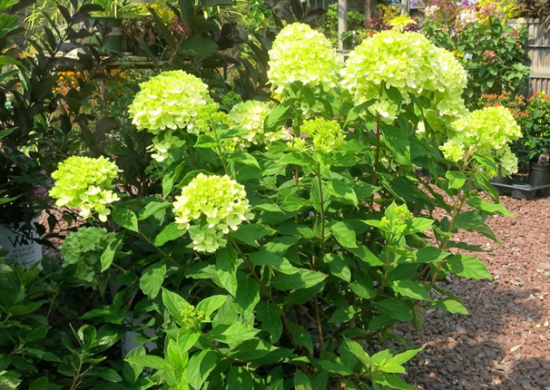
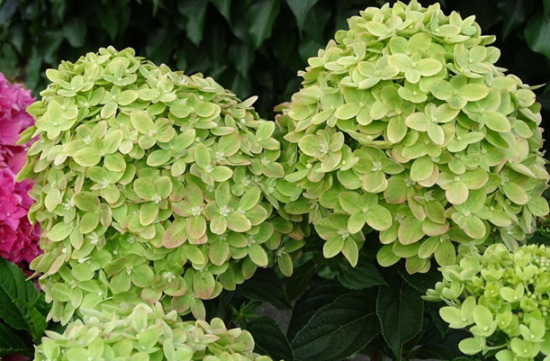
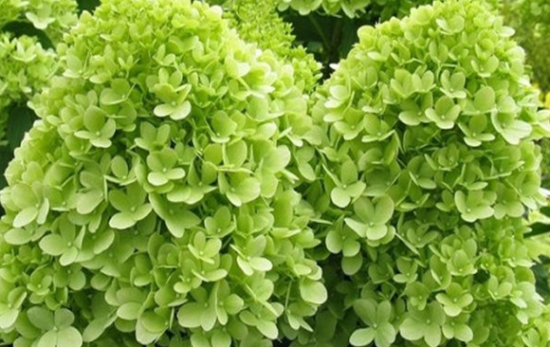
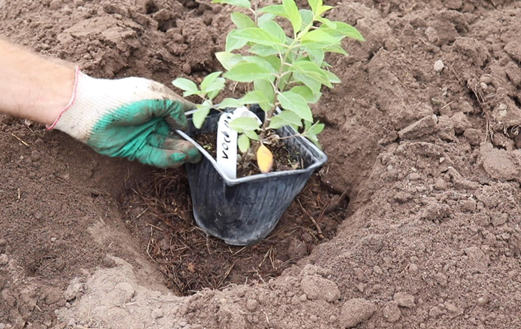
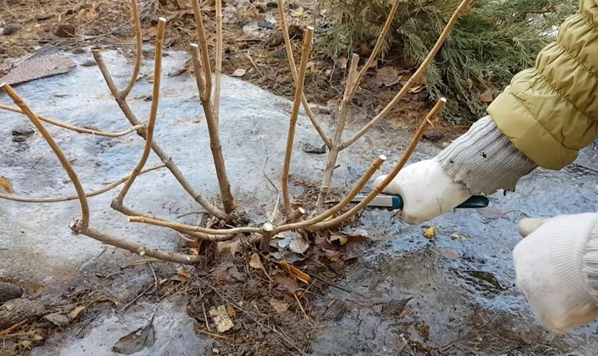
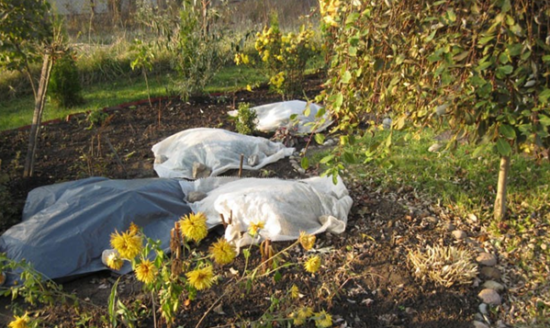

 CUCUMBERS NEVER GET SICK, I'VE BEEN USING ONLY THIS FOR 40 YEARS! I SHARE A SECRET WITH YOU, CUCUMBERS ARE LIKE THE PICTURE!
CUCUMBERS NEVER GET SICK, I'VE BEEN USING ONLY THIS FOR 40 YEARS! I SHARE A SECRET WITH YOU, CUCUMBERS ARE LIKE THE PICTURE! You can dig a bucket of potatoes from each bush. Do you think these are fairy tales? Watch the video
You can dig a bucket of potatoes from each bush. Do you think these are fairy tales? Watch the video
 How our fellow gardeners work in Korea. There is a lot to learn and just fun to watch.
How our fellow gardeners work in Korea. There is a lot to learn and just fun to watch. Eye trainer. The author claims that with daily viewing, vision is restored. They don't charge money for views.
Eye trainer. The author claims that with daily viewing, vision is restored. They don't charge money for views. A 3-ingredient cake recipe in 30 minutes is better than Napoleon. Simple and very tasty.
A 3-ingredient cake recipe in 30 minutes is better than Napoleon. Simple and very tasty. Therapeutic exercises for cervical osteochondrosis. A complete set of exercises.
Therapeutic exercises for cervical osteochondrosis. A complete set of exercises. Which indoor plants match your zodiac sign?
Which indoor plants match your zodiac sign? What about them? Excursion to German dachas.
What about them? Excursion to German dachas.